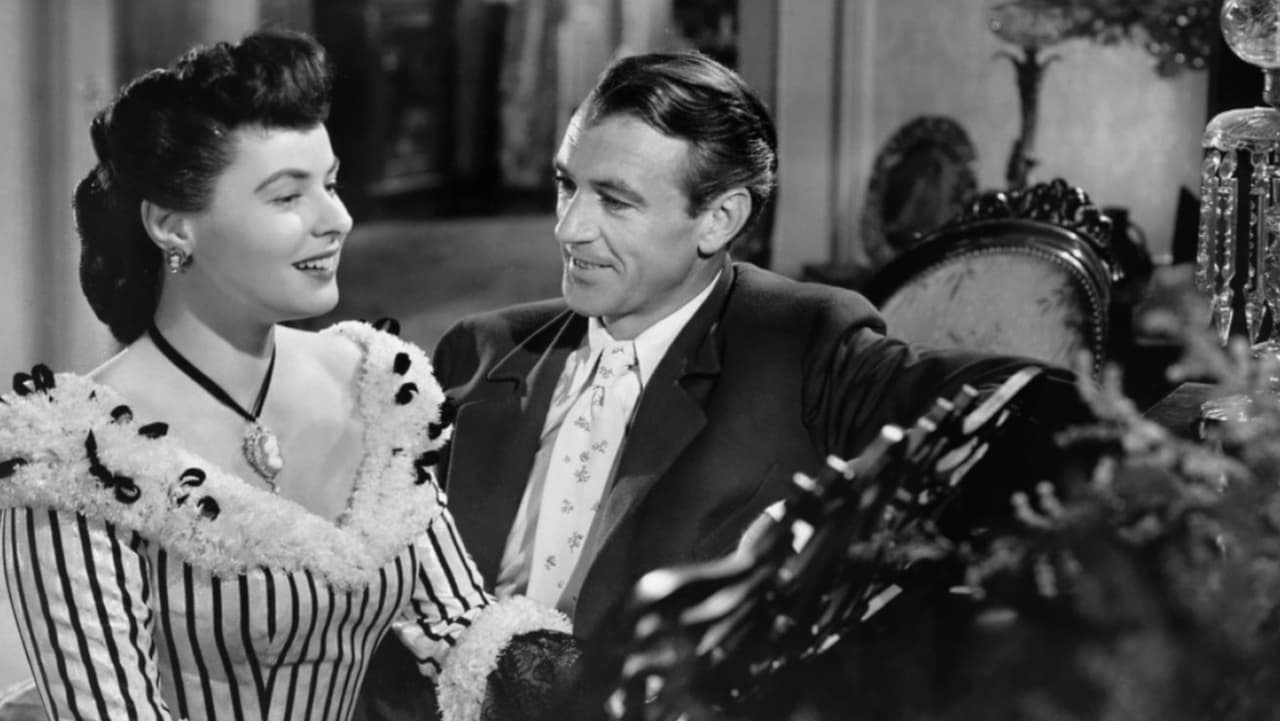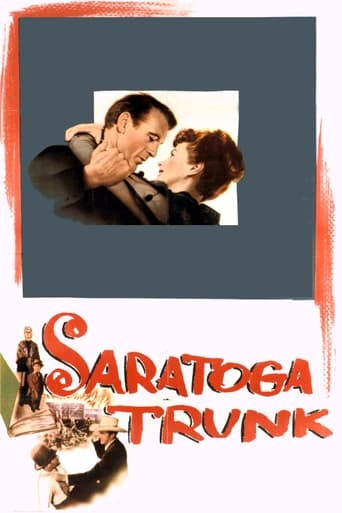Konterr
Brilliant and touching
Brendon Jones
It’s fine. It's literally the definition of a fine movie. You’ve seen it before, you know every beat and outcome before the characters even do. Only question is how much escapism you’re looking for.
Usamah Harvey
The film's masterful storytelling did its job. The message was clear. No need to overdo.
JohnHowardReid
Producer: Hal B. Wallis. Copyright 30 March 1946 by Warner Bros Pictures Inc. A Warner Bros-First National picture. A Hal B. Wallis Production. New York opening at the Hollywood: 21 November 1945. U.S. release: 30 March 1946. U.K. release: 8 April 1946. Australian release: 16 May 1946. 12,409 feet. 137½ minutes. SYNOPSIS: Beautiful fortune-hunter Clio Dulaine arrives back in her native New Orleans, after a long absence, with her bizarre body servant, the mulatto Angelique, and the dwarf Cupidon. In the French market, Clio meets Clint Maroon, a cowboy from Texas, and an immediate and intense mutual love is ignited, despite Angelique's protests. All of New Orleans buzzes over this romance, which reminds them all of the old Dulaine family scandal involving Clio's dead parents. NOTES: With gross domestic rentals of $4.3 million, number 7 at U.S./Canadian ticket windows for 1945. Despite both Cooper's and Bergman's enormous popularity in Australia, the film came in at number 27 of the year's box-office successes. The reason was simple. Quite a few cinemas did not screen Warner Bros movies. Miss Robson lost out on Hollywood's annual award for Best Supporting Actress to Anne Baxter in The Razor's Edge. COMMENT: Commences most promisingly with the return of Miss Bergman to the old family mansion to avenge her mother (shades of King's Row). Unfortunately, this story is wound up with astonishing expedition and the film degenerates into an extended dialogue between its two attractive stars, superlatively photographed in rich black and white against tasteful sets. Finally, the author introduces an entirely different setting which erupts in a brief episode of action before the predictable fade-out.The film is realised with taste, elegance and craftsmanship - indeed it is one of Wood's most stylish films, and it has a marvellous Steiner score - but it seems a long 135 minutes.
slothropgr
This movie is like that old breath mint commercial--you get two (clap) two (clap) TWO flicks in one! The first stars Ingrid Bergman in a tale of revenge in the Big Easy, the second Coop in a railroad adventure taking place 2000 miles away. "Trunk" in this case having nothing to do with luggage, but with a railroad's trunk line. So the title has nothing ay-tall to do with the first half of the movie. In fact except for Coop, Bergman and her bizarre servants neither half has anything to do with the other period. While the novel probably tied these two widely disparate stories together, the movie doesn't bother. You know they're going to end up together, the only question (seeing that they have as little in common as their stories) is how. They're Ingrid and Coop, that's how. NOT one of those romances that make you wonder how they'll get along after the marriage. That said, I enjoyed it. Coop plays Coop, 'nuff said. Ingrid's character is unapologetically out for blood and makes almost no attempt at being sympathetic. It's the perfect antidote for those tired of her hapless helpless milquetoasts in "Casablanca" and "Gaslight." She's gorgeous and in your face. Saved both flicks for me. Great train collision at the end, too--real ones, or so they tell me.
bavolet
I first saw this movie when I was in elementary school, back in the 1960s. I was fascinated with the character played by Ingrid Bergman and it was my introduction to the French Quarter of New Orleans. The first part of the movie is the best as she comes back to exact some revenge on her father's wife and daughter (her mother had been driven out in disgrace). During this time she meets the wonderful Clint Maroon, played by Gary Cooper. The chemistry between the two is great. The second half of the movie takes place in Saratoga, NY (the Saratoga of the title) and I never enjoy it as much as the New Orleans setting but it's still very good. I give this movie a ten - partly out of nostalgia but mostly because it's just a darn good movie and the characters besides those of Bergman and Cooper are equally wonderful (Flora Robson comes close to stealing the scenes from Bergman). It used to be shown on TV periodically but it's shown rarely if ever - it would be a good one for one of the classic movie stations to pick up and put into their programming cycles.
DKosty123
I have to admit I am prejudiced about my vote on this film, but I have strong reasons as I know some of the true history that was given the Hollywood treatment here. Edna Ferber's novel upon which this is based is from an era where real names can't be used. In a way, this film is all smoke & mirrors. Even though it was released in 1946, it was filmed shortly after Casablanca. Ingrid Bergman is at her most radiant in this movie as a brunette. She plays a beautiful woman who is trying to trade on her beauty to get a rich husband. Today that is a gold digger, but in this social era, she is desirable & the kind of woman who makes all the men want her, & all the old snooty society types talk of her & avoid her, while wishing they were her. Ingrid is at her best & plays this role well. Some sympathy for Ingrids character is raised in the New Orleans section of this film as she manages to get a decent belated tomb for her scandalized mother as part of the settlement by her relatives to get her to leave New Orleans. The snooty family of relatives there are so scandalized by her that they will do almost anything she asks to get her to leave town. Gary Cooper is good in this film though he already appears to be aging a bit to play a dashing Texan Bachelor/Gambler. He pulls it off well considering that handicap which he appeared older than he was due to his real life chain smoking. Flora Robison as Ingrid's Maid got nominated for an Oscar as supporting actress in this film. Jerry Austin as Cupidor was over-looked in many ways for his role but is the only comic relief in the film & does it well.When the film moves to Saratoga, it depicts accurately how important Saratoga was in that era. I like the sequence when Bergman walks to the Saratoge Spring to get some of the "sulfur" water which everyone considered so healthy then. When she drinks some she forces herself not to make a face and comments how good it is & that she must have more. The real history is the railroad battle which really occurred on the rail line in Tunnel, New York- which is the actual Saratoga Trunk the film title is derived from. This battle actually happened in 1869 between agents for Andrew Carnagie & J. P. Morgan. The line was the economic key to the country in 1869 connecting coal country & the east coast. The references to it are throughout the film are very real. There is even some dialog describing Carnagie as a "Scot" though the reference is vague & unfamiliar to anyone not knowing the history around the battle.The railroad line & the railroad tunnel in Tunnel, New York (zip code 13848) still exist although the film was shot in California. The real tunnel is about 1 mile long. It is still part of a key freight line today, years after this occurred. I grew up there. Gary Cooper's line in the film while he is riding the train into the tunnel is right, it is still "mighty pretty country".

